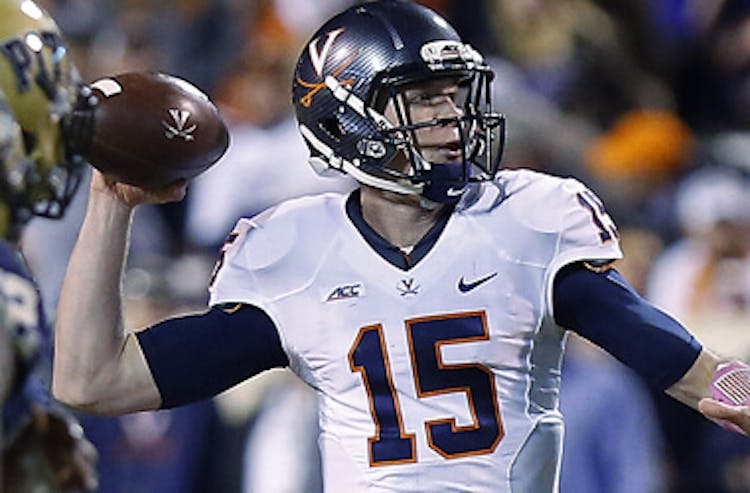College football season is creeping closer and closer, and with that NCAAF bettors are beginning to rev their handicapping engines in preparation for Week 1 and beyond.
In order to help you focus your energy on the most important components of college football capping this summer, we’ve asked some of Covers Experts top handicappers to share what they do when preparing for the NCAA pigskin season.
We looked at capping quarterback changes in Part I, capping coaching changes in Part II, and now focus on three important factors – returning starters, schedule, and close wins/losses – in Part III.
Returning starters
Experience is worth its weight in gold when it comes to cashing in your college football bets, so digging into which programs bring back the most returning starters can help you get a solid start to the season. However, just because a team has 70 percent of their starting offense back from last year doesn’t mean they’re instantly a contender.
“It’s important to know what each team returns in net starters, but it’s even more important to know the exact positions those starters are returning to,” says Covers Expert Steve Merril. “For example, a team could return seven starters on offense, but if the four non-returning players were three linemen and a quarterback, then that is a big negative despite the high number of returning starters.”
Bettors should also be careful when capping returning starters with poor teams. A program like UMass is bringing back 19 starters with nine of those on defense, but that group also ranked 103rd in total yards allowed so expecting a big turnaround from that lack of production is unreasonably optimistic.
Schedule
Many teams like to ease into the season with a softer schedule, like a man slowly making his way into cold water. And some dive head first with a high-profile showdown in Week 1.
Bettors can find plenty of lookahead and letdown spots in the early going. Teams tuning up with FCS opponents can often lookahead to the FBS clash in the coming week or try to rest some of their starters if they get up, opening you up for a backdoor cover when the second and third stringers take the field.
Teams opening the slate with a big-game bang can often find themselves in letdown mode the following week, especially if their national title hopes were dosed in Week 1. All it takes is one big loss and programs can instantly be out of the playoff picture. That disappointment off a loss or a false sense of over-achievement off a win can lead plenty of teams into a letdown the following week.
“I think it's important to get a good feel for the schedules, and generating an idea or opinion of how a particular team's season is likely to ebb and flow,” says one professional handicapper. “Just how important is an early season step-up game? Are there spots in September where a team could be prone to looking ahead? You don't need to have a definitive answer to those questions now, but giving them consideration at this time of year can help you in the long run.”
Another key for capping schedules, especially when talking about teams in the major conferences, is strength of the conference calendar. Often times programs can avoid playing the elite members of their conference and build an unblemished record against weaker opponents.
“With conferences getting bigger and bigger each year, it's important to note which opponents a team will avoid in the upcoming season,” says Covers Expert Bryan Power. “This can be really huge in conferences like the SEC where the bottom teams in both divisions are significantly weaker than the top. If a team from the East Division can avoid, say both Alabama and LSU on its schedule, it has a much better chance of finishing on top.”
Close wins/losses
A team’s overall record isn’t always an honest assessment of their talent level. Some teams that scratched and clawed for a .500 mark could have easily been two or three wins better if not for some heartbreaking losses.
The same goes for the flipside of that argument. Often times teams can be overrated based on their win/loss count, with a closer look revealing some close calls and lucky bounces. Finding and addressing these programs is a great way to spot hidden value early in the season, when many of the odds are based on last year’s accomplishments.
“Last year’s results can help determine what type of season a team will have this year,” says Merril. “For example, if a team had a lot of close wins - I use seven points or less - or a lot of close losses - seven points or less - then I dig into them a bit deeper because often times the good or bad fortunes reverse the next season. The close winners often fail ATS while the close losers often thrive ATS.”
The Virginia Cavaliers finished the 2014 campaign with a 5-7 record but five of those losses came by eight points or less and the team finished with a minus-1.0 margin of victory, leading to a profitable 7-4-1 ATS record.
Check out Part I - College football Betting 101: Importance of capping QB changes for more insight into how to handicap the NCAAF season.
Check out Part II - College football Betting 101: Importance of capping coaching changes for more insight into how to handicap the NCAAF season.
Follow Covers Features Editor Jason Logan on Twitter @CoversJLo.
College football Betting 101: Capping starters, schedules, and close shaves
Virginia lost five of its seven games by eight points or less in 2014 and finished 7-4-1 ATS on the season.




















